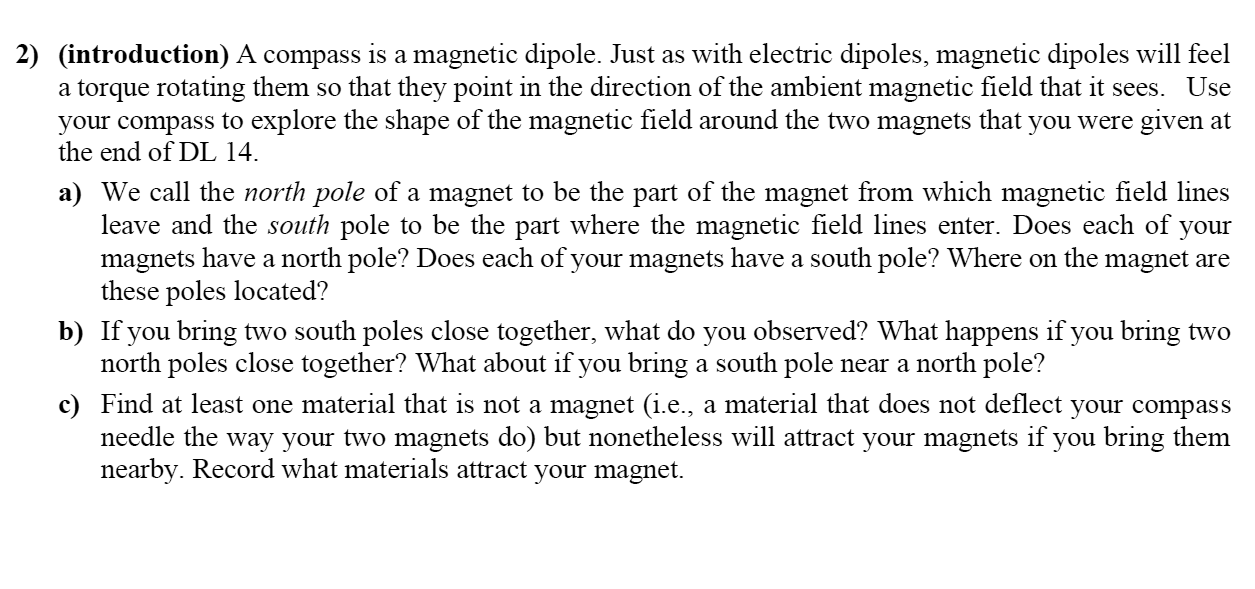Answered step by step
Verified Expert Solution
Question
1 Approved Answer
2) (introduction) A compass is a magnetic dipole. Just as with electric dipoles, magnetic dipoles will feel a torque rotating them so that they

2) (introduction) A compass is a magnetic dipole. Just as with electric dipoles, magnetic dipoles will feel a torque rotating them so that they point in the direction of the ambient magnetic field that it sees. Use your compass to explore the shape of the magnetic field around the two magnets that you were given at the end of DL 14. your a) We call the north pole of a magnet to be the part of the magnet from which magnetic field lines leave and the south pole to be the part where the magnetic field lines enter. Does each of magnets have a north pole? Does each of your magnets have a south pole? Where on the magnet are these poles located? b) If you bring two south poles close together, what do you observed? What happens if you bring two north poles close together? What about if you bring a south pole near a north pole? c) Find at least one material that is not a magnet (i.e., a material that does not deflect your compass needle the way your two magnets do) but nonetheless will attract your magnets if you bring them nearby. Record what materials attract your magnet.
Step by Step Solution
There are 3 Steps involved in it
Step: 1
a Identifying North and South Poles of Magnets To determine the north and south poles of each magnet you can use a compass The north pole of a magnet ...
Get Instant Access to Expert-Tailored Solutions
See step-by-step solutions with expert insights and AI powered tools for academic success
Step: 2

Step: 3

Ace Your Homework with AI
Get the answers you need in no time with our AI-driven, step-by-step assistance
Get Started


